“Settling” constitutes a warcime according to international law and ICC statute. Even under US’ own military legislations’
Law resources below this article
Friday May 10, 2013 05:27 by Saed Bannoura – IMEMC & Agencies
Follow @imemcnews
On Thursday evening, hundreds of Palestinians held a protest against Israeli illegal confiscation of their lands, including lands that belong to the Cremisan Monastery, in Beit Jala city, in the Bethlehem district.
![protest_beit_jala[1]](https://occupiedpalestine.files.wordpress.com/2013/05/protest_beit_jala1.jpg?w=588)
Image By Radio Bethlehem 2000
Shawkat Matar, one of the participants in the protest, stated that local scout groups, and a number of civil society institutions in the city organized the protest due to Israel’s ongoing violations of illegal settlement activities, and the construction of the illegal Annexation Wall in the Cremisan monastery, and its surrounding Palestinian lands.
He added that hundreds of Palestinians gathered in front of the Arab Orthodox Club in Beit Jala, and marched towards the illegally confiscated lands in Cremisan.
The protesters chanted against the ongoing Israeli occupation and violations, Israel’s ongoing settlement construction and expansion activities, and its illegal Wall.
A week ago, Father Ibrahim Shomaly, told the BBC that the issue here is not about politics, but about human rights.
“The Church must hear the people when they suffer, this is not about politics”, Father Shomaly told the BBC, “There are 57 Palestinian Christians families that will lose their lands, losing their lands means losing their hope”.
Israel’s Annexation Wall is planned to split the Cremisan monastery and valley into two parts; Gilo and the Har Gilo illegal settlements are on Palestinian lands on opposite hilltops, and Israel wants to ensure the Annexation Wall separates Beit Jala from the two settlements.
Israeli settlements and its Annexation Wall, built in the occupied Palestinian territories, are illegal under International Law and the Fourth Geneva Convention to which Israel is a signatory.
Israel claims that its Jewish settlements are “Israeli cities and towns”, and that the Annexation Wall is meant to “ensure Israel’s security from Palestinian attacks”.
But on the ground, the Annexation Wall is built in a manner that allows Israel to build and expand its illegal settlements in the West Bank, including occupied East Jerusalem.
In 2004, the International Court issued an advisory ruling considering the Annexation Wall illegal, and stated that although it recognizes “Israels right to defend itself, the Wall was built in a way that violates international law.”
The Court said that the Wall, which runs deep in the West Bank, and occupied East Jerusalem, separating the residents from their lands, and isolating entire Palestinian populated areas, also violates Israels international obligations.
It called on Israel to dismantle the completed sections of the Wall, to compensate the Palestinians for their losses, and to render ineffective all legislative and regulatory acts it took after approving the construction of the Wall.
The court further called on Israel to compensate the Palestinians for the destruction of homes, businesses and agricultural lands, and to allow them to return to their lands and orchards, and to return all lands seized by the Wall.
It also called on all UN member states to perform their legal duties by not recognizing the illegal situation the Annexation Wall and settlements created in occupied Palestine, and to ensure Israel complies with International Law.
Israel strongly slammed the ruling, disregarded it, and maintained what its called “its right to protect its citizens, to build and expand its settlements”, in the occupied West Bank, including in and around occupied East Jerusalem.
![]()
LAW
“States may not deport or transfer parts of their own civilian population into a territory they occupy.”
Summary
State practice establishes this rule as a norm of customary international law applicable in international armed conflicts.
International armed conflicts
The prohibition on deporting or transferring parts of a State’s own civilian population into the territory it occupies is set forth in the Fourth Geneva Convention.[1]
It is a grave breach of Additional Protocol I.[2]
Under the Statute of the International Criminal Court, “the transfer, directly or indirectly, by the Occupying Power of parts of its own civilian population into the territory it occupies” constitutes a war crime in international armed conflicts.[3]
Many military manuals prohibit the deportation or transfer by a party to the conflict of parts of its civilian population into the territory it occupies.[4]
This rule is included in the legislation of numerous States.[5]
Official statements and reported practice also support the prohibition on transferring one’s own civilian population into occupied territory.[6]
Attempts to alter the demographic composition of an occupied territory have been condemned by the UN Security Council.[7]
In 1992, it called for the cessation of attempts to change the ethnic composition of the population, anywhere in the former Yugoslavia.[8]
Similarly, the UN General Assembly and UN Commission on Human Rights have condemned settlement practices.[9]
According to the final report of the UN Special Rapporteur on the Human Rights Dimensions of Population Transfer, including the Implantation of Settlers and Settlements, “the implantation of settlers” is unlawful and engages State responsibility and the criminal responsibility of individuals.[10]
In 1981, the 24th International Conference of the Red Cross reaffirmed that “settlements in occupied territory are incompatible with article 27 and 49 of the Fourth Geneva Convention”.[11]
In the Case of the Major War Criminals in 1946, the International Military Tribunal at Nuremberg found two of the accused guilty of attempting the “Germanization” of occupied territories.[12]
References
[1] Fourth Geneva Convention, Article 49, sixth paragraph (cited in Vol. II, Ch. 38, § 334).
[2] Additional Protocol I, Article 85(4)(a) (adopted by consensus) (ibid., § 335).
[3] ICC Statute, Article 8(2)(b)(viii) (ibid., § 336).
[4] See, e.g., the military manuals of Argentina (ibid., §§ 346–347), Australia (ibid., § 348), Canada (ibid., § 349), Croatia (ibid., § 350), Hungary (ibid., § 351), Italy (ibid., § 352), Netherlands (ibid., § 353), New Zealand (ibid., § 354), Spain (ibid., § 355), Sweden (ibid., § 357), Switzerland (ibid., § 357), United Kingdom (ibid., § 358) and United States (ibid., § 359).
[5] See, e.g., the legislation of Armenia (ibid., § 361), Australia (ibid., §§ 362–363), Azerbaijan (ibid., §§ 364–365), Bangladesh (ibid., § 366), Belarus (ibid., § 367), Belgium (ibid., § 368), Bosnia and Herzegovina (ibid., § 369), Canada (ibid., §§ 371–372), Congo (ibid., § 373), Cook Islands (ibid., § 374), Croatia (ibid., § 375), Cyprus (ibid., § 376), Czech Republic (ibid., § 377), Germany (ibid., § 379), Georgia (ibid., § 380), Ireland (ibid., § 381), Mali (ibid., § 384), Republic of Moldova (ibid., § 385), Netherlands (ibid., § 386), New Zealand (ibid., §§ 387–388), Niger (ibid., § 390), Norway (ibid., § 391), Slovakia (ibid., § 392), Slovenia (ibid., § 393), Spain (ibid., § 394), Tajikistan (ibid., § 395), United Kingdom (ibid., §§ 397–398), Yugoslavia (ibid., § 399) and Zimbabwe (ibid., § 400); see also the draft legislation of Argentina (ibid., § 360), Burundi (ibid., § 370), Jordan (ibid., § 382), Lebanon (ibid., § 383) and Trinidad and Tobago (ibid., § 396).
[6] See, e.g., the statements of Kuwait (ibid., § 405) and United States (ibid., §§ 406–407) and the reported practice of Egypt (ibid., § 402) and France (ibid., § 403).
[7] See, e.g., UN Security Council, Res. 446 , 452 and 476 (ibid., § 408), Res. 465 (ibid., § 409) and Res. 677 (ibid., § 410).
[8] UN Security Council, Res. 752 (ibid., § 411).
[9] See, e.g., UN General Assembly, Res. 36/147 C, 37/88 C, 38/79 D, 39/95 D and 40/161 D (ibid., § 412) and Res. 54/78 (ibid., § 405); UN Commission on Human Rights, Res. 2001/7 (ibid., § 413).
[10] UN Sub-Commission on Human Rights, Final report of the Special Rapporteur on the Human Rights Dimensions of Population Transfer, including the Implantation of Settlers and Settlements (ibid., § 415).
[11] 24th International Conference of the Red Cross, Res. III (ibid., § 419).
[12] International Military Tribunal at Nuremberg, Case of the Major War Criminals, Judgement (ibid., § 421).

 May 10, 2013
May 10, 2013 
 Still live in fairy-tale-land about Israel? Time to wake up: The Map of the “Greater Israel” even is hammered on the currency:All facts at Storify continuously updated. Read what Israeli ‘leaders’ have said and done even before (peace) talks and how their actions contradict the reality and ugly facts which they try to hide from you:
Still live in fairy-tale-land about Israel? Time to wake up: The Map of the “Greater Israel” even is hammered on the currency:All facts at Storify continuously updated. Read what Israeli ‘leaders’ have said and done even before (peace) talks and how their actions contradict the reality and ugly facts which they try to hide from you:




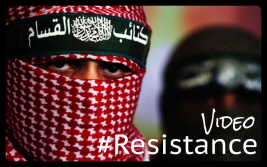

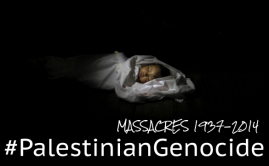





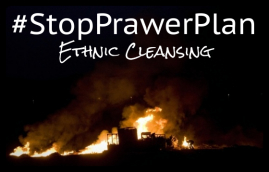











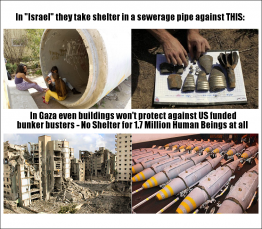





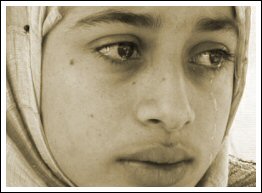
Comments are closed.